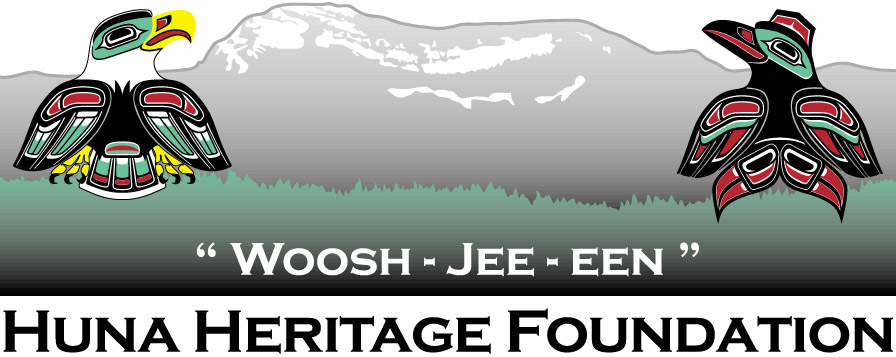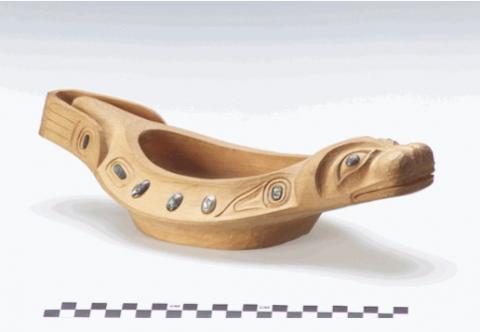Seal Oil Bowl
This bowl was carved by Amos Wallace is made from yellow cedar and is inlaid with abalone shell. Traditionally this item would have been made from Red Alder and would have been used for seal oil at a meal. Alder would have provided hard wood durability and a neutral taste to the oil.
This piece still shows the bright wood of a bowl that has not been used to contain seal oil so this would have been used for display. Those bowls that are used for seal oil take on a dark patina almost black as the oil soaks through the wood and ages over time. Amos probably shaped this bowl with an adze, but he definitely used a crooked knife to carve in the details and finish the bowl. The lip of the bowl is designed in a way so that the user can scrape off excess oil from the food dipped in it, this design helped to prevent making a mess while eating. It would have been common for a bowl of this kind to accompany a well set Tlingit meal, analogous to having an olive oil bowl available for Italian meals.
Hoonah People were famous for their ability to hunt sea mammals and passed these skills on through their maternal aunts and uncles.
Xáay x’ayeit (yellow cedar)
tsaa eexí (hair seal oil)
Shéix’w (Red Alder)
Gunxaa (Abalone)
xút’aa (adze)
yoo katan litaa (crooked knife)
Seal oil provided the needed calories for Tlingit people to live in a harsh environment and it served as a great base condiment for the different foods that made up the Tlingit diet. Through the generations Tlingits also perfected the additional use of this oil for food preservation.
Made while the artist served as demonstration aide during an Indian Arts and Crafts Board workshop in Juneau, Alaska; formerly in the collection held by the Indian Arts and Crafts Board Office in Sitka, Alaska, which included many pieces produced and acquired during IACB demonstration-workshops held in Alaska between 1961 and 1968; transferred to the IACB Headquarters collection in Washington, DC, in 1969; part of the IACB Headquarters collection (Department of the Interior, Washington, DC) until 2000 when it was transferred to NMAI

